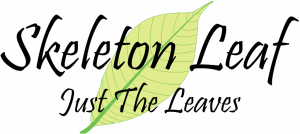Making Skeleton Leaves
Skeleton leaves (or ghost leaves) are real tree leaves. They are collected from trees and after a special treatment which removes the fleshy parts and preserves only the rib structure, the leaves transform into beautiful, delicate looking skeleton leaves. Here we describe the methods our supplier uses to make our skeleton leaves; we also illustrate with actual photographs from our supplier. As you'll no doubt notice from these photographs, making skeleton leaves is very much a cottage industry. The leaves supplied by Skeleton Leaf - Just The Leaves are all grown and processed in Thailand.
Step 1 Harvesting the Leaves
Our supplier collects leaves fresh from the tree. (If you are making your own skeleton leaves, depending on the type, you may also need press them. Place them between two flat surfaces, add weights to the upper surface and leave for several weeks in a dry, undisturbed place.)
Step 2 Placing the Leaves in Solution
Our supplier then places the leaves in a gentle solution which slowly dissolves away the flesh of the leaves. The solution probably contains washing soda (sodium carbonate) though different manufacturers (including ours) have their own carefully guarded secret recipes. (We recommend you use washing soda and wear rubber gloves.)
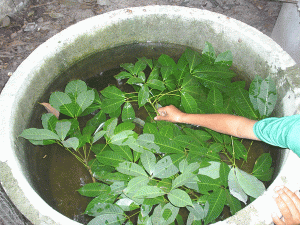
Add Fresh Leaves to a Special Solution
Step 3 Leave to Soak
The leaves must be left to soak for several days during which time the flesh turns to pulp. Some manufacturers may also heat the leaves to speed up the process. (If you are making your own skeleton leaves, there is no hard and fast rule for the soaking time. You will need to check on your leaves periodically to see how they are progressing and judge for yourself when the fleshy parts have dissolved enough.)
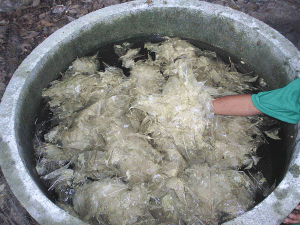
The Leaves After a Few Days of Soaking
Step 4 Rinsing the Leaves
The supplier then removes the leaves from the solution and rinses them in cold water. (If you are preparing your own skeleton leaves, with some types of leaf you may need to gently assist removal of the pulp with a brush.)
Afterwards the leaves are put out in the strong Thai sun to dry out. The leaves are now "skeleton leaves". These are the leaves which we sell as Natural Un-dyed.
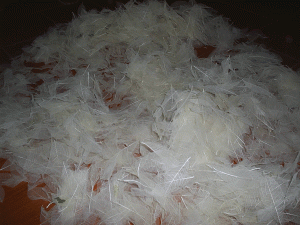
The Leaves After Soaking, Rinsing and Drying
Step 5 Dyeing the Leaves
After sorting the leaves by size, they are now ready to dye. As you can see below, our supplier prepares the dyes in large pots. (You can dye your homemade leaves too. You could also dye "Natural Un-dyed" leaves after purchasing from Skeleton Leaf - Just The Leaves.)
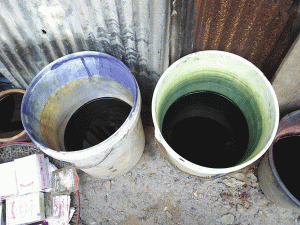
Mix the Dyes in Large Containers
Looking rather like feather dusters, the dyed leaves hanging to dry in the hot Thai sun.
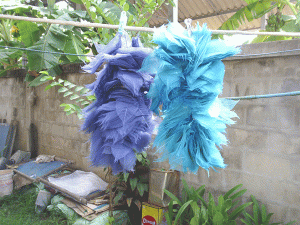
Hang the Dyed Leaves Out to Dry in the Sun
The final colour of the leaves depends on many factors including the dye used, the length of time the leaves are exposed to the dye and the speed at which they dry out in the sun.
The leaves are now "dyed skeleton leaves", which we sell in a variety of different colours.
The leaves can also be spray painted to create metallic finishes as well as Ivory. We will cover these in a later article.

